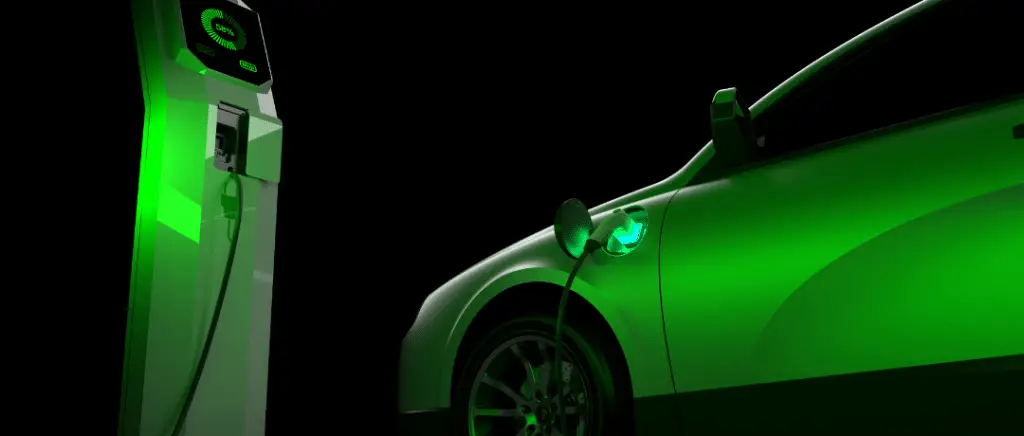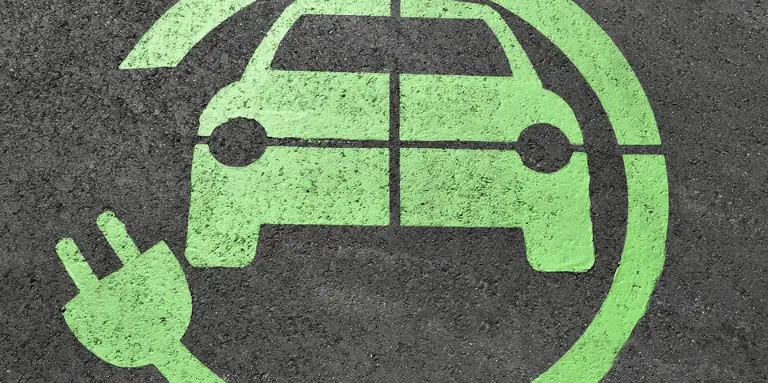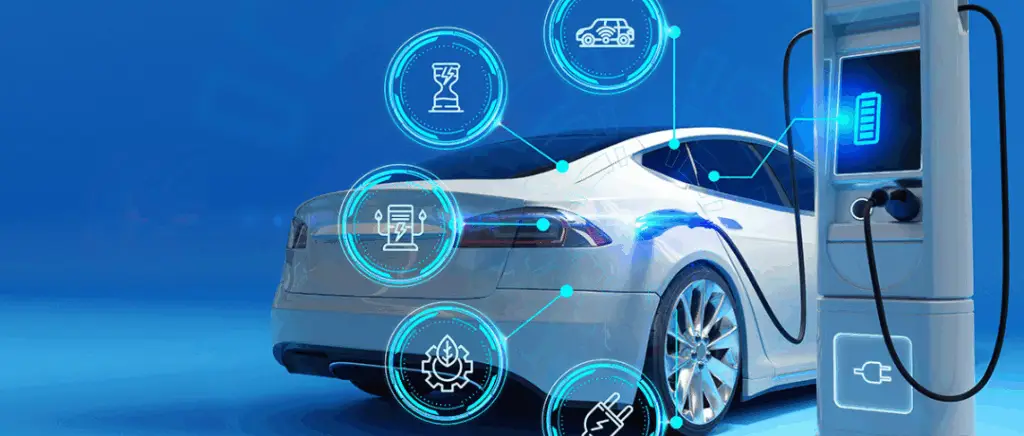With Beev
Switch to
Electric cars
or install your
Charging station
For individuals and businesses
What is the environmental score for electric cars?

The environmental score for electric vehicles is a mark awarded to every new electric vehicle in France from 1 January 2024. It is an indicator of the environmental impact of the vehicle throughout its life cycle, from the extraction of raw materials to its recycling.
The score is calculated by theADEME (Agency for Ecological Transition) and takes into account several criteria, including :
- L'carbon footprint of the vehicleIn other words, the quantity of greenhouse gases emitted during its manufacture, use and recycling.
- The use of recycled and bio-sourced materials in the manufacture of the vehicle.
- The effectiveness of batteryIn other words, its ability to store and release energy.
The environmental score is between 0 and 100 points. The higher the score, the lower the environmental impact of the vehicle.
The method for assessing the eligibility of new electric passenger cars for the aforementioned environmental score aid is defined in Articles D. 251-1-A and R.251-1-B of the Energy Code and in the Order of 7 October 2023.
Read more: Ecological bonus 2024: changes to come
How can the environmental score help consumers make informed choices about electric vehicles?
The environmental score can help consumers make informed choices about electric vehicles in a number of ways:
1. By comparing the environmental impact of different models
The environmental score allows consumers to easily compare the environmental impact of different electric vehicle models. This enables them to choose a model that matches their values and environmental objectives.
2. By identifying the most efficient vehicles
Electric vehicles with a high environmental score are generally more efficient than those with a low score. This means that they consume less energy and cover more kilometres on a single charge. This can be an important factor for consumers looking for an economical electric vehicle.
3. By finding out about the materials used
The environmental score takes into account the presence of recycled and bio-sourced materials in the vehicle's manufacture. This can be an important criterion for consumers concerned about the sustainable use of resources.
4. By obtaining information on the vehicle's end of life
The environmental score also takes into account the recyclability of the vehicle. This can be an important criterion for consumers who want to reduce their environmental impact throughout the vehicle's life cycle.
In addition to these benefits, the environmental score can also help consumers to :
- Benefit from state aid: In France, electric vehicles with a high environmental score are eligible for state aid. state aidsuch as environmental bonus and the conversion premium.
- Supporting carmakers committed to the ecological transition By choosing an electric vehicle with a high environmental score, consumers can help to encourage carmakers to produce more environmentally-friendly vehicles.
It's important to note that the environmental score is not the only factor to consider when buying an electric vehicle. Other factors, such as price, fuel efficiency, etc., are also important.autonomyperformance and functionality must also be taken into consideration.
However, the environmental score is a valuable tool that can help consumers to make informed and responsible choices when it comes to mobility.
Read more: Ecological transition: 60 % of the 3,447 French companies concerned do not comply with the LOM law
Method for calculating the environmental score
What stages in the life cycle of an electric vehicle are taken into account when calculating the environmental score?
The environmental score for an electric vehicle in France, which has been in place since 1 January 2024, takes into account the following stages in the vehicle's life cycle:
1. Manufacture of electric vehicles
- Extraction and transformation of raw materials: This stage includes the extraction of natural resources such as lithium, copper, zinc, lead, zinc oxide, etc. cobaltthe nickel and manganese for the battery, as well as the production of other materials such as aluminium, copper and steel for bodywork and components. Environmental impact is assessed by considering greenhouse gas emissions, water and energy consumption, and the production of waste associated with these activities.
- Component manufacture: This stage covers the transformation of raw materials into key components of the electric vehicle, such as the battery, motor, electronic system and chassis. The environmental impact is analysed in terms of the manufacturing processes, energy consumption and greenhouse gas emissions generated during the production of these components.
- Vehicle assembly: The final assembly of the electric vehicle involves bringing together all the previously manufactured components. This stage is assessed taking into account the energy consumed and greenhouse gas emissions associated with assembling the vehicle.
2. Electric vehicle transport
- Transport of components: The transport of the various components from the production sites to the assembly plants is taken into account. The environmental impact is assessed on the basis of the mode of transport used (road, sea, rail), the distance travelled and the greenhouse gas emissions generated during transport.
- Transport of the finished vehicle: The transport of the assembled electric vehicle from the production plant to the dealer is also considered. The environmental impact is analysed using the same criteria as for the transport of components.
3. Use of the electric vehicle
- Electricity consumption: The most important stage in terms of greenhouse gas emissions is the use of the electric vehicle. The score takes into account the average electricity consumption of the vehicle over its lifetime, based on different driving cycles and taking into account the energy mix of the country where the vehicle will be used.
- Wear and tear and replacement of parts: The natural wear and tear of the electric vehicle's parts and their possible replacement during its lifetime are also taken into account. The environmental impact is assessed on the basis of the production and recycling of replaced parts.
4. End of life of the electric vehicle
- Dismantling the vehicle: The dismantling of the electric vehicle at the end of its life to separate the various components and materials is taken into account. The environmental impact is analysed in terms of the energy consumed and potential pollution generated during dismantling.
- Material recycling: The proportion of the electric vehicle's materials that can be recycled is an important part of the score. The environmental impact of the recycling process, including energy consumption and greenhouse gas emissions, is also assessed.
- Waste treatment: The treatment of non-recyclable materials and remaining components of the electric vehicle is taken into account. The environmental impact of treatment methods, such as incineration or landfill, is analysed.
What information about the vehicle is needed to calculate the environmental score?
To calculate the environmental score of an electric vehicle in 2024, carmakers must provide ADEME with the following information:
Vehicle details :
- Vehicle make, model and version
- Vehicle weight
- Battery capacity (kWh)
- Vehicle energy consumption (WLTP standard)
- Country of manufacture of the vehicle
Vehicle manufacturing data :
- Quantity of each raw material used to manufacture the vehicle
- Country of origin of raw materials
- Manufacturing processes used for each vehicle component
- GHG emissions linked to the manufacture of each vehicle component
Battery data :
- Type of battery chemistry
- Quantity of each raw material used to manufacture the battery
- Country of origin of raw materials for the battery
- Battery manufacturing processes
- GHG emissions linked to battery manufacture
- Battery recycling capacity at end of life
ADEME then uses this data to carry out a life cycle analysis (LCA) of the vehicle and calculate its environmental score.
It is important to note that this information is not publicly available. Only ADEME has access to the detailed data used to calculate the environmental score for electric vehicles.
| Type de véhicule | Valeur de référence basse (kg-eq CO2) | Valeur de référence haute (kg-eq CO2) | Score environnemental |
|---|---|---|---|
|
Vehicles with 5 or more seats
|
12 000
|
21 000
|
0 (not eligible) if ECversion >= 21 000, 80 if ECversion <= 12 000, 80 x ((21 000 - ECversion) / (21 000 - 12 000)) if 12 000 <= ECversion < 21 000
|
|
Other vehicles
|
6000
|
17 000
|
0 (not eligible) if ECversion >= 17 000, 80 if ECversion <= 6 000, 80 x ((17 000 - ECversion) / (17 000 - 6 000)) if 6 000 <= ECversion < 17 000
|
How can I obtain the environmental score for an electric vehicle?
There are two main ways of obtaining an electric vehicle's environmental score:
- Use the ADEME platform:
- Visit the platform dedicated to environmental scoring electric vehicles.
- Enter the VIN code or number plate of the vehicle.
- The vehicle's environmental score will be displayed, along with its breakdown by criterion.
- Consult the vehicle registration certificate (carte grise) :
- Since 1 July 2023, the environmental score has been included on the registration document for new electric vehicles.
- It is located in box Z11.
Conclusion
In short, the environmental score for electric vehicles, established by ADEME, offers consumers a concrete way of assessing the ecological impact of vehicles throughout their life cycle. By taking into account factors such as carbon footprint, battery efficiency and recyclability, this score enables consumers to make informed choices, support the ecological transition and benefit from government aid.
Although it is just one aspect to consider when making a purchase, the environmental score plays an important role in encouraging responsible decisions that help to preserve the environment and combat climate change.
If you're looking for a buying an electric car or installation of recharging pointsBeev is there for you!
































